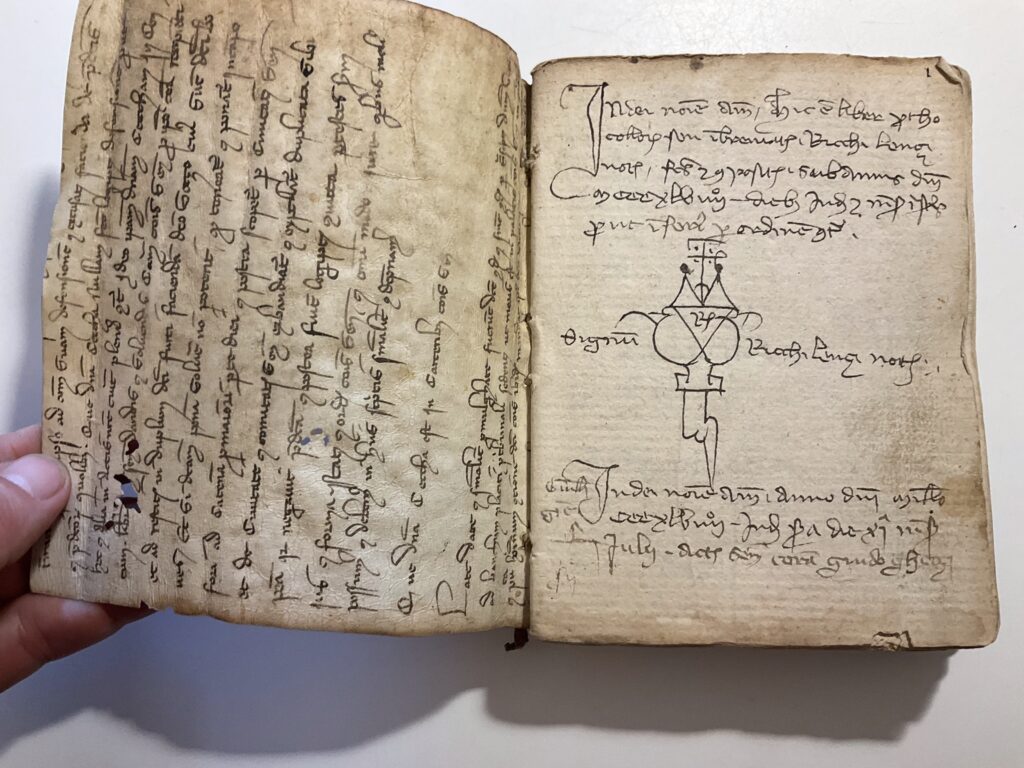
Waste and reuse are key topics in modern consumer society, but in the Middle Ages, there was no discussion around them. Considering the high cost of producing new objects, everything had to be reused, recycled, or transformed down to the very last bit. Parchments were made from animal skins (sheep, goat, or calf) and were therefore very durable and quite expensive. Once the original text became obsolete, parchments could be scraped or washed to make room for new writing, or they could be repurposed as wrappers or covers.
Old – sometimes very old – but still sturdy parchments were even reused to wrap cheese and other perishable foods. Medieval Italian communes banned these practices among cheesemongers, pizzicaiuoli (delicatessen sellers), and the heirs of notaries, the latter being accused of poor archival practices.
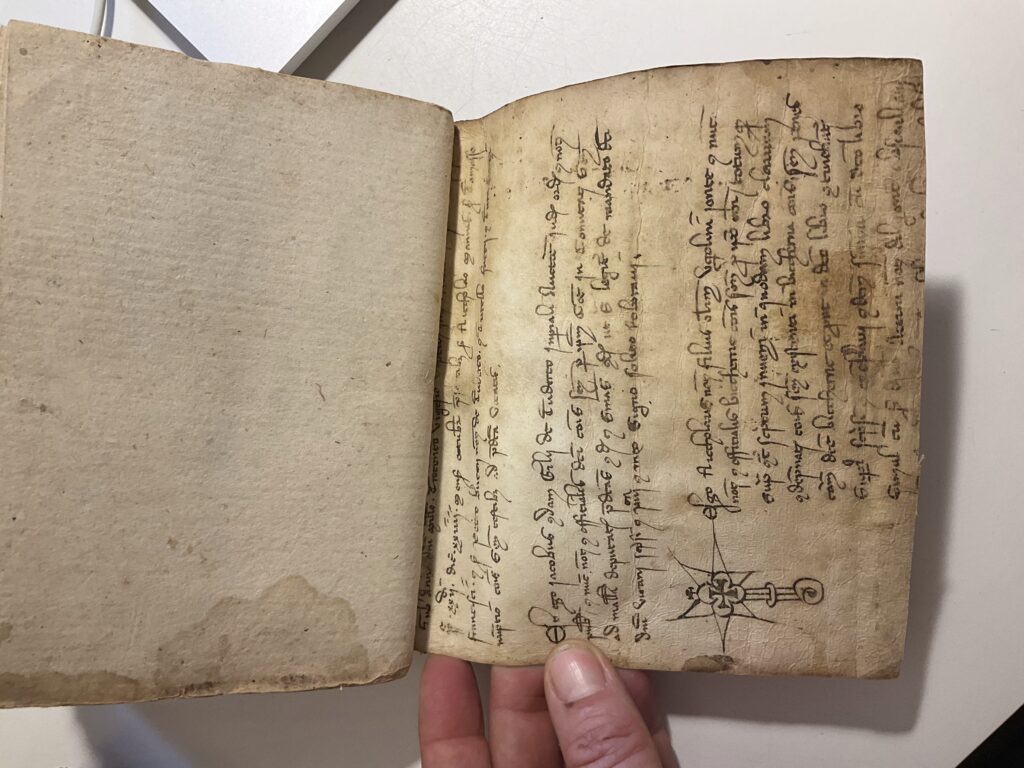
In our work mining medieval archives, we often come across volumes rebound with recycled covers, with the original texts still readable. Repurposed parchments may have been chosen simply for their durability or even for their visual appeal. Coming across these “refurbished” or “recovered” notarial books can brighten a grey day of archival research with few findings.
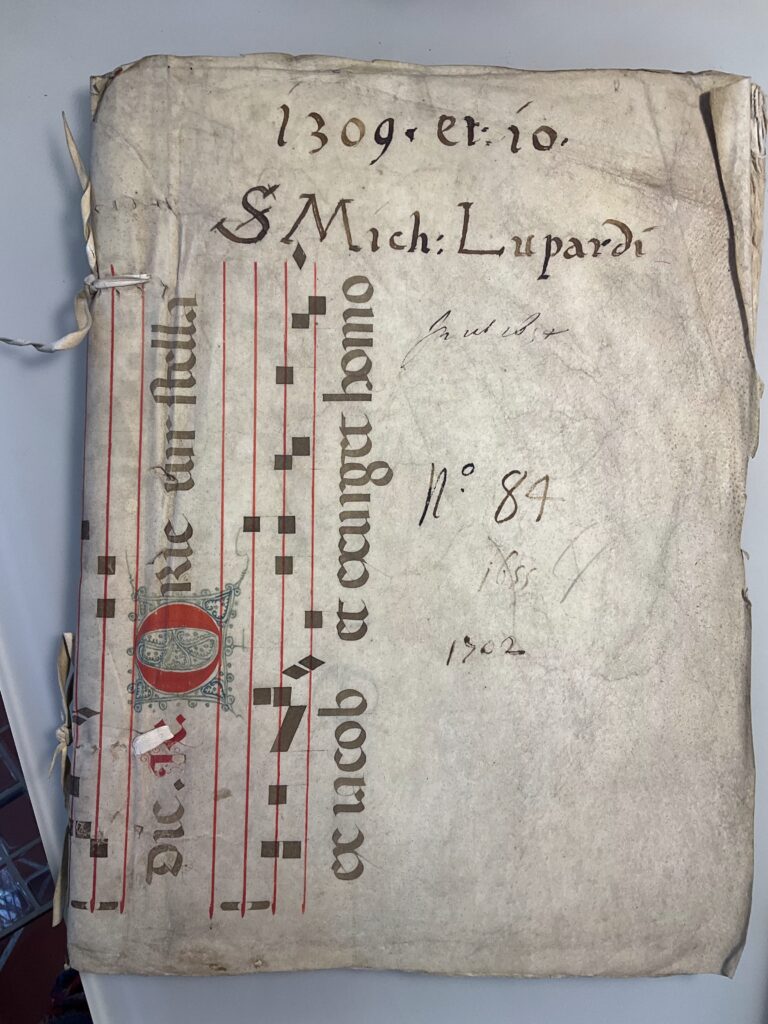
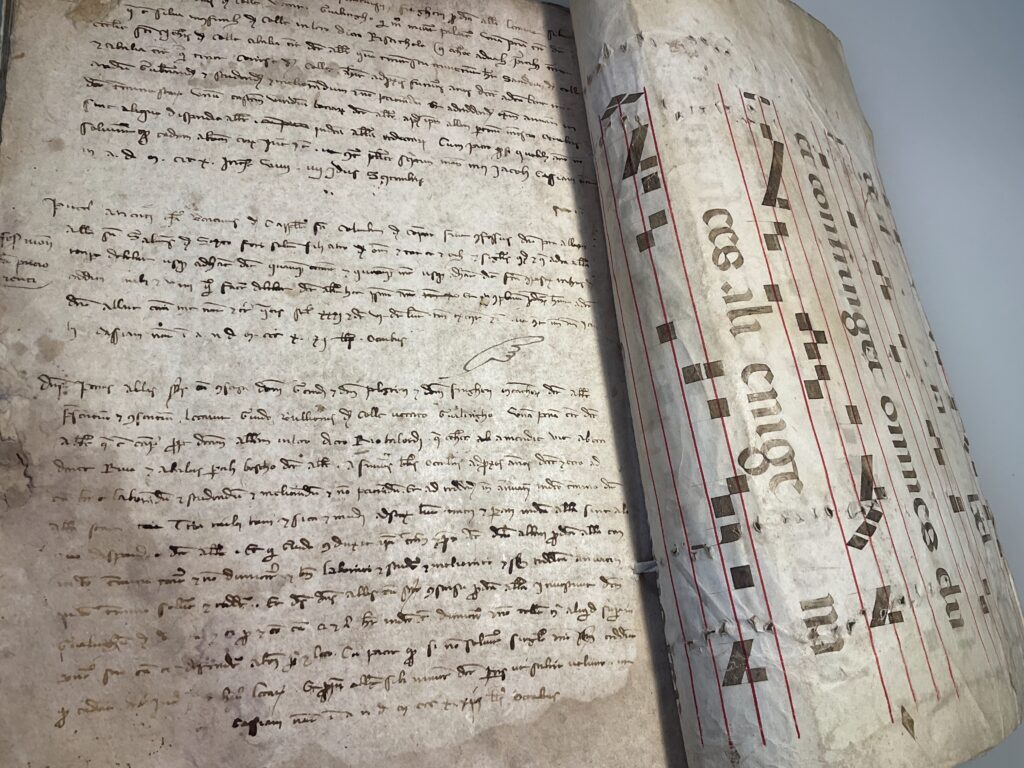
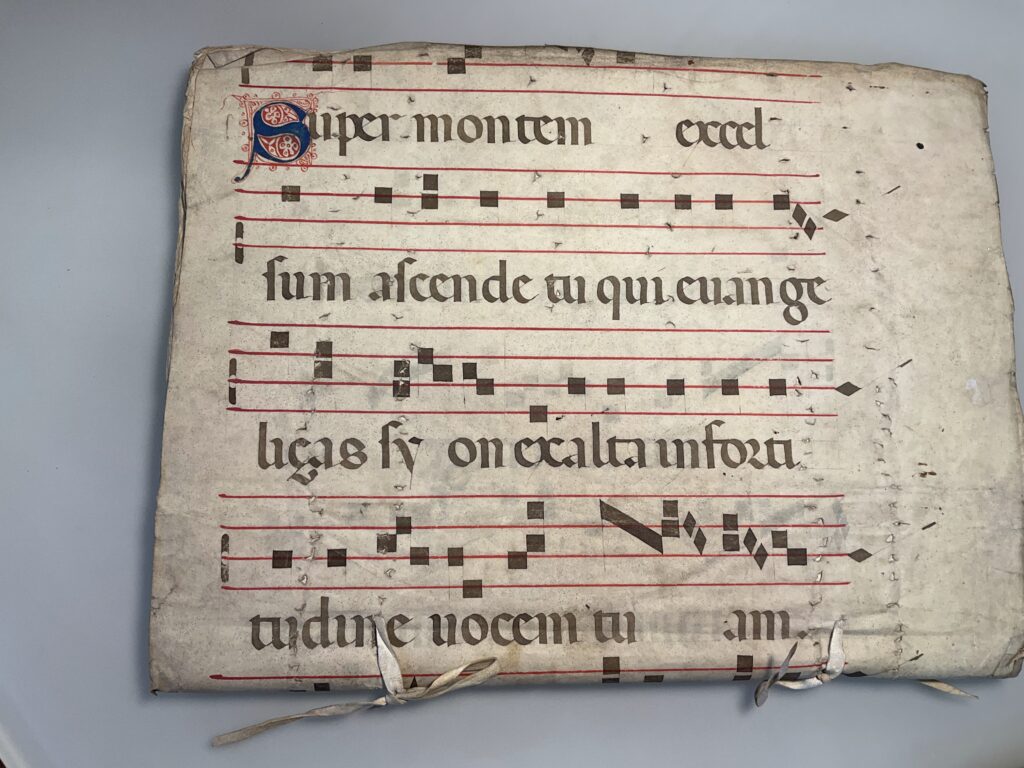
Discovering a beautiful cover made from a 13th-century music manuscript in Lucca was one of those lucky days for me. It contained the chant “Super montem excelsus ascende tu” (picture 3). I was tempted to hum it while flipping through the pages of the 14th-century miscellaneous notarial book it had been protecting for centuries. Luckly for the other users of the archives that day, I am not that good at reading music.
But the message here has to do with the materiality of the book. An old document is much more than the script it preserves – It has its own fascinating material story to tell.
